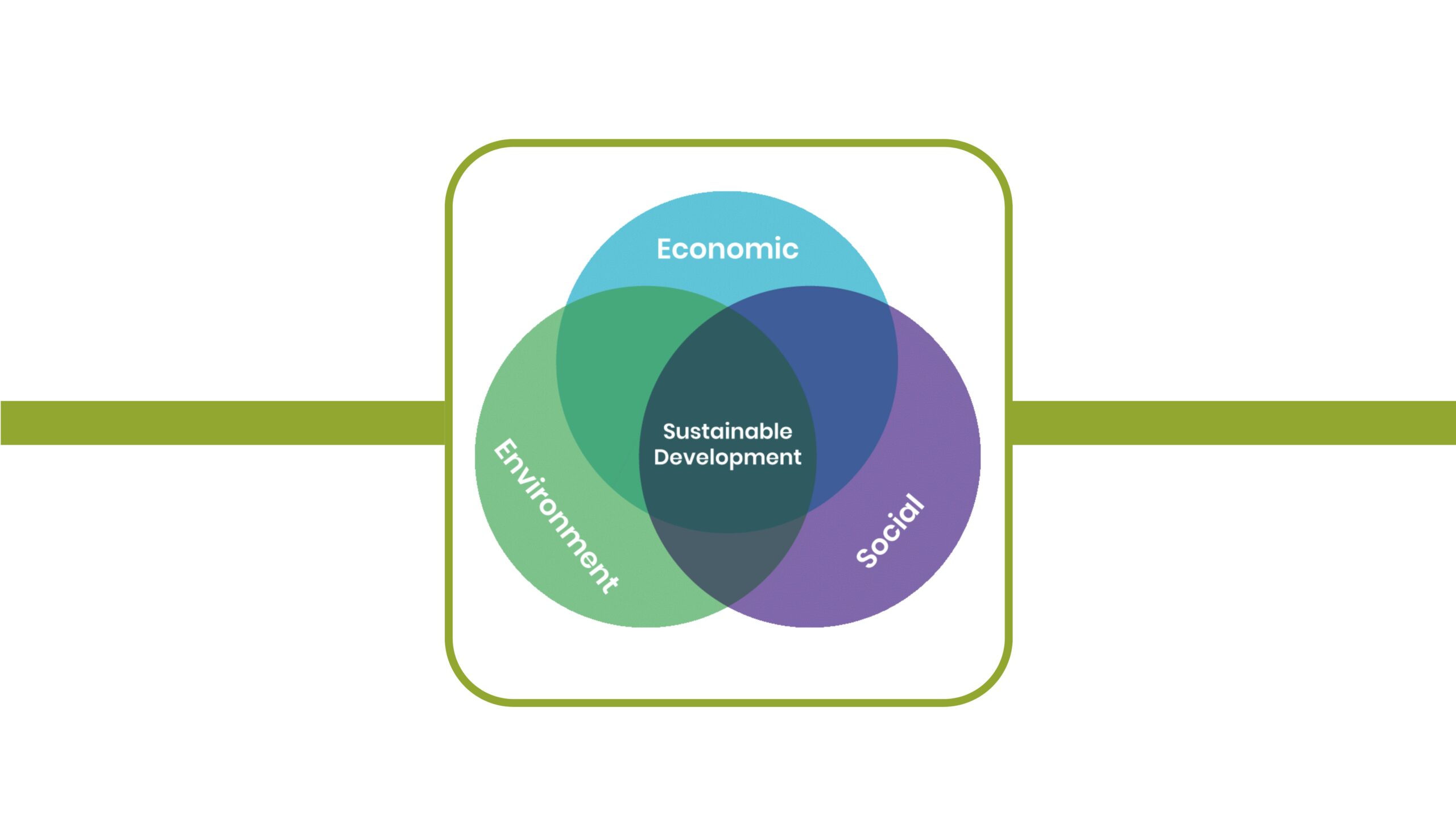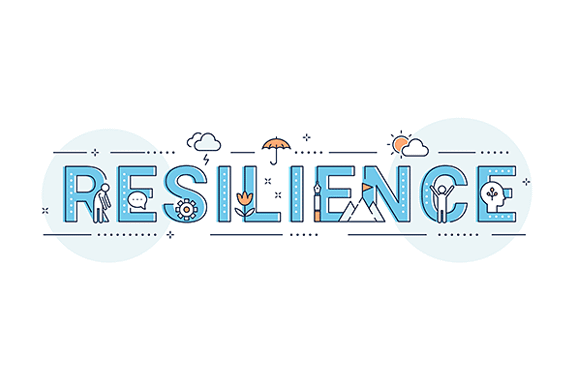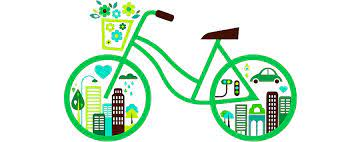DOWNLOADS
TEASER
INTRODUCTION AND MODULE DESCRIPTION
SUSTAINABILITY PLANS, RESILIENCE AND EMPOWERING WOMEN ENTREPRENEURS
SUSTAINABILITY IN BUSINESS
SUMMING UP
SELF-ASSESSMENT TEST
SUCCESS CASE
BIBLIOGRAPHY AND
FURTHER
REFERENCES
RELATED TRAINING
MATERIALS
ESCO COMPETENCES
AND SKILLS
Sustainability
in Times of Crisis
DOWNLOADS
TEASER
INTRODUCTION AND MODULE DESCRIPTION
SUSTAINABILITY PLANS, RESILIENCE AND EMPOWERING WOMEN ENTREPRENEURS
SUSTAINABILITY IN BUSINESS
SUMMING UP
SELF-ASSESSMENT TEST
SUCCESS CASE
BIBLIOGRAPHY AND FURTHER REFERENCES
RELATED TRAINING MATERIALS
ESCO COMPETENCES AND SKILLS
>
By clicking on the icons, you can easily download the files that provide a unified, downloadable version of the content available on this page. The training materials are provided in PDF format, reflecting both document and presentation types.
Introduction and module description
- In this module we can gain knowledge of business Sustainability in its three aspects, economic, social and environmental.
- Divided into two main blocks, in the first we will discuss relevant aspects about the importance of having business sustainability plans so that, in addition to generating financial profitability, they create environmental, social and economic value. Strengthen the resilience and empowerment of women entrepreneurs, so that they have a business resilience framework that unites risk and crisis management, and thus empower women entrepreneurs in their role as entrepreneurs and leaders, increasing their participation in positions of responsibility.
- We will also analyse how to make a sustainability plan in a company step by step.
- In the second block we will fully enter into Sustainability in business, where we will see why sustainability in business is important, what benefits sustainability brings in business, how to create a sustainable strategy, its challenges and benefits, as well as the role of women in the world of sustainability.
- Through inspiring case studies, analysis of emerging trends and practical strategies, we will explore how businesses can not only survive, but thrive by adopting a sustainable approach. Get ready to discover how sustainability can be the path to a brighter future and how you can be part of this transformation. Welcome to a journey towards business sustainability in times of crisis!
LEARNING CONTENT
In terms of sustainability in times of crisis and specifically crisis management of women entrepreneurs, the following matters can be addressed:
Sustainability plans: It is important for companies, including those led by women, to have sustainability plans that allow them to face crises and disruptions more effectively.
Business sustainability is applied to businesses so that, in addition to generating financial profitability, they create environmental, social and economic value in the medium and long term, thus contributing to the progress and well-being of the communities where they operate and future generations. For example, sustainability in business can mean: Use of sustainable materials in the production or practice of sustainable manufacturing. Utilising renewable energy and resources to power production facilities and reduce carbon emissions.
Resilience: Business, economic, and social resilience are interlinked, and it is important for companies to have a business resilience framework that unites risk and crisis management.
Empowering women entrepreneurs. It is important to empower women in their role as entrepreneurs and leaders, to increase their participation in leadership positions and help them launch and scale their entrepreneurial initiatives.

How to make a sustainability plan in a company step by step
The Sustainability Plan is the roadmap that determines a company or organisation’s sustainability strategy. Its purpose is to define the short, medium and long-term objectives and the actions to be implemented, articulated around the main axes (social, economic and environmental).
Defining and implementing a sustainability plan is how an organisation realistically commits to becoming a sustainable company. In this way, it ensures that its impact is positive in the three main dimensions, economic, social and environmental.
The sustainability plan will define the main lines of action, with their deadlines for achievement, and those responsible, which will allow the progress of the organisation to be documented year after year. This implies having a proactive attitude in order to achieve continuous improvement in the company.
Companies that aspire to sustainability need to define the path to reach their goal. Every sustainability plan has three dimensions: economic, social and environmental.
The sustainability plan should be a roadmap towards business sustainability, but for it to work it must be realistic, with concrete proposals and actions. These have to solve the main shortcomings and problems of the organisation in all the vectors involved. Solutions could range from energy efficiency, waste management, emissions, consumption and other environmental aspects, as well as other social and economic aspects.
Only companies that have a viable and robust sustainability plan will be able to position themselves as competitive companies in the medium and long term. This is because consumer social and environmental awareness has increased in such a way that consumers no longer forgive companies that do not have a sustainability plan that convinces them.
It is no longer enough to take specific actions in environmental matters. That behaviour, far from being beneficial, shows a lack of long-term environmental commitment from the company. The business development model of a company today must be accompanied by a sustainability plan, being sustainable is not an option, it is a necessity.
Environmental impacts such as climate change are more than notorious realities and companies that are prepared to address these changes will have a competitive advantage over others to respond.

Steps to Implementing a Sustainability Plan
Any sustainability plan, in order to be successfully implemented in an organisation, must comply with at least these steps:
A) Make an initial diagnosis
Any sustainability plan must begin with an initial diagnosis, which allows us to know where we are starting or where we are. It has to identify existing environmental risks and also opportunities for improvement. That first diagnosis of the state of art is essential, since we must know what our critical points are that we need to work on.
In other words, do we know our environmental impacts? Do we know what environmental aspects we generate throughout our life cycle? Do we know what our waste is, our consumption, our emissions, etc.?
B) Define objectives and their action plan
After the initial study and prioritising the key points, the next step in our sustainability plan should be to define the strategic objectives. What do we want to achieve? The definition of these objectives must be concrete, it must leave no room for doubt. This implies establishing the actions that we must implement, those that we must correct, or which we must reinforce.
Each objective within the sustainability plan must have its own action to achieve it. Objectives must be specific, measurable, achievable, and realistic and must have a maximum time frame for achieving them.
For each objective of the sustainability plan, we must define:
– Those responsible for each action
– The resources needed to achieve them
– The deadlines for the implementation of each action
– The monitoring indicators for each objective The frequency of monitoring
– The frequency of monitoring
The sustainability plan must be documented and communicated and disseminated to all levels of the organisation. In this way, all employees will be able to experience sustainability as their own, which will increase their degree of commitment and participation. Likewise, it must also be communicated to the external parties involved (customers, suppliers, etc.).
C) Define the key indicators for each objective
There can be no realistic sustainability plan if it does not have defined key indicators. These will help us to analyse our degree of evolution or continuous improvement in each of the objectives we have set ourselves.
Sustainability indicators are essential to be able to measure objectives and assess the progress achieved. They will also be useful to change our strategy in the event that the one we are implementing is not giving us the desired results or to strengthen it in the opposite case. A typical indicator is the carbon footprint.
Indicators must have a starting value that determines the starting point, and the value to be achieved or target value, as well as the time frame to achieve it.
As much as possible, they should be based on measurable data, because what is not measured cannot be improved. Therefore, whenever feasible, we must quantify our impacts (amounts of waste, concentration of pollutants emitted, etc).
D) Implementation of the sustainability plan
Each team responsible for achieving the actions must be organised to implement these actions in a sustainable manner over time. Sustainability plans should be considered as one more task to be undertaken on a day-to-day basis so as not to become a simple formality to be achieved in the face of the follow-up meeting.
The sustainability plan should be realistic, it should never be considered as a formality. Companies must have a true commitment to sustainability if they want their consumers not to turn their backs on them because they consider their strategy pure marketing or opportunistic.
However, the leadership of the management must be aware that it is the one who must get involved and set an example.
E) Periodic monitoring of the progress of the sustainability plan
With a predetermined periodicity, the sustainability plan must be monitored to assess the degree of achievement of the objectives. For them, we will rely on sustainability indicators, which are the ones that will give us the data to be able to make an objective assessment.
Ideally, we should have a documented dashboard where we can visually assess the evolution of each objective based on its indicators, depending on whether or not we are deviating from the expected value. As a result of the monitoring of the sustainability plan, a report must be issued, where a photograph of the situation in which the sustainability plan is located is captured. The necessary corrective actions will also be assessed in case there are objectives that are deviating.
F) Have software for the management of the sustainability plan
An alternative that will improve the efficiency and organisation of work is the implementation of software that helps us in the management of the sustainability plan. We can also use tools such as Excel. The important thing is that year after year we can trace the sustainability plan and all the associated documentation, and we can easily reach conclusions about how we are evolving in relation to the proposed sustainable objectives.
Advantages of implementing a sustainability plan
The implementation of the sustainability plan is the most orderly and efficient way to carry out sustainability management in the organisation and also has multiple advantages for the companies that implement it:
– It facilitates the work and implementation of actions. If we have a documented roadmap, it is easier to implement it, work collaboratively and also analyse its evolution over time.
– Contribution to the improvement of environmental conditions and reduction of impacts.
– Competitive advantage: consumers tend to choose sustainable brands based on realistic data and above all companies committed to sustainability. The best way to demonstrate our commitment is to have a realistic sustainability plan in place.
– Brand image: improves the company’s image in the eyes of third parties.
– Savings and cost reduction: every sustainability plan involves the implementation of measures to promote savings and efficiency. Indirectly, it will mean a reduction in energy costs and consumption. Sustainability Helps Us Be Efficient.
– Ensure legal compliance, avoiding penalties. A sustainable company must comply with legislation rigorously and, through the definition of actions, tend to continuous improvement.
– Improves internal image in front of workers: employees value working in sustainable companies, and that take sustainability seriously. A sustainability action plan certifies this commitment.
– Environmental risks to the company are reduced.
Tips for implementing a sustainability plan
1. Ensure management commitment: for a sustainability plan to move forward successfully, the absolute commitment of the company’s management is necessary, not only in the economic aspect, implementing the necessary resources, but also in leadership.
2. Communication and participation: it is also key that sustainability is everyone’s issue. Employees must be involved in the action plans and must be involved and updated on the sustainability actions that are being implemented, in the same way as other stakeholders (partners, customers, suppliers, etc).
3. Carry out an initial diagnosis: it is essential to have a good understanding of our initial environmental aspects and impacts. We can hardly improve what we don’t know.
4. Have quantitative data: measuring our environmental impacts in order to have objective data is the best way to be able to analyse the sustainability plan from an objective and realistic perspective. We must have measurements and analysis of all possible variables (discharges, waste, consumption, etc.). Only what is measured gets better.
5. Prioritise: the sustainability plan must be realistic and pretending to do it all the first year is not. We must select from among all the areas for improvement which are the ones that may have the most urgency or will have the greatest positive impact.
6. Create multidisciplinary teams: bringing together employees from different areas to achieve objectives is the best way to ensure success. Many times it is necessary to see things from different prisms to have a 360º vision.
7. Analyse the entire lifecycle or supply chain. The sustainability plan needs to encompass the entire value chain. It is common for companies to set the limits of sustainability within the limits of their production process, but there are many areas that we can improve that fall outside these limits. To do this, it is best to do a life cycle analysis that will help us define priorities. The idea is to minimise impacts from the origin of our raw materials, until our products are no longer on the market: what is called from the cradle to the grave. We must encompass the entire value chain within our sustainability plan.
Risk management
Analysing potential obstacles and risk factors is an important part of business management. By identifying potential risks, businesses can take steps to minimize their impact and prepare for unexpected situations. Some of the common risk factors include changes in the economy, competition, technology, government regulation, and natural disasters.
To develop risk management plans, companies must identify the specific risks they face and develop strategies to mitigate them. This may include implementing security measures, diversifying the product portfolio, creating contingency plans, and taking out insurance.
Crisis management is a critical process for businesses facing unexpected situations, such as the COVID-19 pandemic. Businesses should have contingency plans in place to address emergency situations and minimise the impact on their operations. This can include implementing remote work policies, reorganising the supply chain, and communicating clearly with employees and customers.
To increase resilience and adapt to changing circumstances, businesses can take steps to improve their flexibility and responsiveness. This can include investing in technology, training employees, and creating a company culture that fosters innovation and adaptability.
In summary, the analysis of potential obstacles and risk factors, the development of risk management plans, and crisis management are critical elements of business management. By taking steps to increase resilience and adapt to changing circumstances, businesses can improve their ability to meet challenges and seize opportunities.
How to identify potential obstacles and risk factors in a company?
To identify potential obstacles and risk factors in a company, the following steps can be taken:
1. Identify the most important assets of the company, including the information that is part of the primary assets, which are indispensable for the achievement of the objectives and mission of the business.
2. Conduct a risk assessment to identify the specific risks faced by the company.
3. Develop strategies to mitigate identified risks, such as implementing security measures, diversifying the product portfolio, creating contingency plans, and taking out insurance.
4. Identify potential obstacles that may arise in the implementation of risk mitigation strategies.
5. Take steps to overcome identified obstacles, such as diversifying revenue streams, exploring new markets, continuous innovation, implementing remote work policies, reorganising the supply chain, and communicating clearly with employees and customers.
It’s important to note that potential pitfalls and risk factors can vary depending on the type of business and the industry in which it operates. Therefore, it is necessary to conduct a company- and sector-specific risk assessment to identify relevant risks and obstacles.
What are the most commonly used tools to perform a risk analysis in a company?
There are several tools and techniques that can be used to conduct a risk analysis in a company. Below are some of the most commonly used tools:
Risk Analysis Questionnaire: This is a set of standardised questions that are used to identify potential risks in a company. The questions inquire about situations that may represent a risk, and the affirmative answers establish the most representative risks.
Insurance Policy Checklist: This tool is used to identify risks that are covered by company insurance policies and those that are not. This allows the company to take steps to mitigate uncovered risks.
Process Flow Chart: This tool is used to identify risks in the company’s processes. The process is graphically represented and critical points where risks may occur are identified.
Cause-and-effect analysis (Ishikawa or herringbone): This visual technique is ideal for identifying the possible causes of a risk. The risk is graphically represented and the possible causes of the risk are identified.
Quantitative risk assessment: This technique is used to assign numerical values to identified risks and determine their likelihood and severity. This allows the company to prioritise risks and develop strategies to mitigate them.
Qualitative risk assessment: This technique is used to assess risks without assigning numerical values. It relies on the experience and judgement of experts to identify risks and determine their likelihood and severity.
Importantly, each tool and technique has its own advantages and disadvantages, and choosing the right tool will depend on the company’s needs and resources.
Women’s business empowerment
To understand what business resilience is, it is important that we look at how companies responded to confinement, teleworking, the need to continue with business and other aspects derived from the pandemic crisis. We’ll see that some companies adapted better to the changes than others. Why does this happen? What makes the difference? It is precisely business resilience, that is, the ability to adapt to changes, learn from them and know how to grow in the face of difficulties.
Business resilience is the ability of companies to adapt to change, learn from it and know how to grow in the face of difficulties.
What makes a resilient company?

Restaurants are some of the businesses that have suffered the most from the pandemic, but there are many cases where they have managed to adapt to adversity. For example, the DO Restaurant in Granollers is a restaurant and cooking school focused on local and quality products. This was their strategy: When the lockdown began, the restaurant had a large amount of perishable goods. To sell the products and continue with the activity, menus adapted to the takeaway were designed and social networks were used to communicate the new services. Therefore, they adapted to the situation by applying resilience.
A resilient company is characterised by several elements:
1. You can easily create and delete structures.
2. It puts the employee at the centre.
3. Create resilient work environments where communication and cooperation are encouraged.
4. Conduct and analyse employee perceptions to avoid a bad work environment.
Business priorities in the post-pandemic era
We can highlight the following business priorities in the wake of the COVID-19 pandemic:
Resilience. Companies need to be able to adapt to environments where the point of contact with customers may change, there may be a sudden increase or decrease in demand, or where connectivity and security must be protected so that employees can work from home.
Process automation. More than half of today’s business processes are expected to be automated by 2025. Automation allows repetitive tasks to be done by robot software and employees to focus on tasks of value to the business.
Data-driven decision-making. It is essential that decision-making processes are based on up-to-date and real data, in this way, it will be easier to deal with changes in the market, in demand or the emergence of new competitors.
We live in dynamic environments that can change at any time, so it is necessary for organisations to have structures and plans to quickly adapt to unforeseen situations, learn from them and reinvent themselves, if necessary. Resilience is the key to not only surviving, but developing and growing in changing markets in the post-COVID-19 era.

What kind of leadership is needed during a crisis?
Crisis management is greatly influenced by the type of leadership at the helm of a business. It is worth reflecting on these questions: “What kind of leader am I?” and “What areas do I need to improve in?”
To help with this reflection, we provide some guidance! Read the following article and answer the questions below.
https://hbr.org/2020/12/research-women-are-better-leaders-during-a-crisis
What do you think are the key leadership traits that made women more effective leaders during a crisis, according to the research? Do you agree with these findings?
What has been your experience regarding how employees perceive female leaders compared to male leaders, both in general and in crisis situations? Do you have any personal experiences to share?
The article suggests that women scored higher on competencies such as inspiring and motivating others, developing relationships, and taking initiative. Do you agree that these are essential competencies for overcoming a crisis? Why or why not?
Reflecting on your own workplace, organization, or community, have you observed differences in how male and female leaders respond to challenges? If so, what stood out to you? What lessons have you learned from these experiences?

Sustainability in business refers to the strategy a company takes to reduce the negative environmental impact resulting from its operations within a particular market. An organisation’s sustainability practices are typically analysed based on environmental, social, and governance (ESG) metrics
As we face irreversible changes to the planet’s system, the threat of climate change has become too risky to ignore. Exceeding environmental limits raises concerns about ripple effects on natural systems and global societies. Companies are seeing both the pressure and the opportunity to set sustainability goals if they have not already done so. Even in the current environment of the COVID-19 pandemic, companies continue to align with the United Nations General Assembly Sustainable Development Goals (SDGs) established in 2015 and expected to be achieved by the year 2030. The SDGs establish universal goals that provide a guideline for achieving sustainability in business in target areas such as poverty, inequality, environmental degradation and climate change.
Examples of sustainability in business:
- Improve the efficiency of energy management using alternative energy sources and considering the carbon footprint.
- Implement infrastructure that reduces GHG* emissions, preserve water resources and eliminate waste.
* Greenhouse gases (also known as GHGs) are gases in the earth’s atmosphere that trap heat. During the day, the sun shines through the atmosphere, warming the earth’s surface. At night the earth’s surface cools, releasing heat back into the air. But some of the heat is trapped by the greenhouse gases in the atmosphere
- Operate dynamic and efficient supply chains to promote a circular economy, encourage reuse, eliminate waste, promote sustainable consumption and protect natural resources.
- Enable sustainable development by assessing risks and improving resilience while following external regulations and development goals.

Why is sustainability important in business?
We do business in an unpredictable world. Climate change, declining natural resources, and increasing demands on our energy and food supplies are disrupting business operations and supply chains in unexpected ways.
It has never been more important for public and private organisations to comprehensively rethink the way they operate. Transforming into a successful sustainable business requires new levels of resilience and agility, rooted in responsible practices that preserve our planet.
Sustainability is a business imperative and should be fundamental to the strategy and operations of all companies. The reasons for this are both ethical and financial:
– Employees are increasingly looking to work with companies that present a mission and purpose that cares about the planet when deciding where to work. 71% of employees and job seekers say environmentally sustainable companies are more attractive.
– Consumers are willing to pay more for products from brands that are environmentally responsible. 80% of consumers indicate that sustainability is important to them.
– Governments, investors, employees and customers are demanding new levels of corporate responsibility, including action to address climate change.
– Many of the world’s major economies have or are developing corporate disclosure requirements on environmental impact, prompting companies to reduce GHG emissions.
– The rise of environmental, social and governance (ESG) investment criteria, as well as sustainable investing, indicate that a sustainable business is inherently more attractive to the growing number of responsible investors. Investment in ESG assets can reach 53 billion in 2025, representing more than a third of global assets.
To safeguard our planet and our future, companies must drive decarbonization, meet environmental regulatory requirements and compliance deadlines, and improve resource consumption. Those leading the way in sustainable business practices are adopting new business models to win customers, increase brand loyalty, and discover new opportunities to reduce costs.

Benefits of Sustainability in business
Companies that thoughtfully integrate sustainable practices into their operations are realising valuable business benefits. These include:
Competitive advantage
Many consumers say that environmental responsibility is extremely important when choosing a brand. Being recognized as a sustainable business can improve your brand presence and help you attract consumers who are willing to choose companies that actively engage in sustainable practices.
Attractive for investors
4 in 5 personal investors plan to act on sustainability or social responsibility factors in the next 12 months.
Compliance with regulatory requirements
Governments will continue to expand regulations and corporate sustainable development goals (SDGs). Stay ahead by implementing sustainable solutions from the beginning to meet these new regulatory requirements and continually capture, measure, compare and report on ESG (Environmental, Social and Governance) performance.
Greater longevity of transformation investments
The COVID-19 pandemic has accelerated digital transformation in most companies. If this transformation is sustainable, it will be building a more resilient business prepared for changes and new opportunities.
Talent acquisition
Purpose-driven job seekers want to work for sustainable and socially responsible companies. By building a reputation as a sustainable company, you can attract and retain the right employees for your company.
Revenue growth
By implementing sustainable practices that reduce resource consumption and optimise operational efficiency, today’s change agents become tomorrow’s winners as they improve their results. While efforts that have a greater overall impact may be more expensive to implement up front, the long-term gains will justify the investment.

How to create a sustainable strategy?
Early leaders in business sustainability are applying digital technologies such as AI (Artificial Intelligence), IoT data (Internet of Things), blockchain, and hybrid cloud to help operationalize sustainability at scale. In the process, many are discovering opportunities to increase efficiency while creating more motivated and inspired employees and more satisfied and loyal customers. The key to a successful sustainability strategy is balancing environmental drivers with key differentiators and market demands.
The first step in creating a sustainable strategy is to ensure that stakeholders have a clear and agreed vision for the future state of the business. This may require outside help to get everyone on the same page. We must first identify the main challenges and opportunities, prioritise critical actions, and measure results against sustainability and business goals, delivering results in weeks instead of months.
Then, follow an approach with time-measurable goals to implement the sustainable vision in all aspects of your organisation. Document everything in an environmental management system with defined roles, responsibilities and accountability.
Finally, start with concrete initiatives that can generate tangible and measurable results, thus demonstrating value. This will demonstrate the value of sustainability in business to gain more engagement, build momentum and greater ability to scale.
Corporate sustainability areas
Five main focus areas to plan for a resilient and profitable future:
(1) Climate Risk Management and ESG (Environmental, Social and Governance) Reporting
The last decade recorded the greatest impacts caused by natural disasters. Organisations must consider the impact of climate change on their business operations, which is causing extreme weather events, in a scalable and repeatable way. Prepare for disruption with solutions that bring together multiple data sources, including proprietary, third-party, geospatial, weather, and IoT data, with advanced analytics. Predict and plan for critical weather events to enable sustainable development and ensure business continuity. Reduce operational costs and complexity of ESG compliance and reporting.
(2) Resilient infrastructure and intelligent operations
The global challenges of climate change and environmental degradation, security, privacy and resource management require businesses to ensure their infrastructure is designed and managed with resilience in mind. By using intelligent asset management, predictive maintenance and monitoring organisations can extend asset life, reduce downtime and maintenance costs, optimise maintenance, repair and operations (MRO* Maintenance, Repair, and Overhaul (or administratively – Maintenance, Repair, and Operations)) inventories, reduce emissions C02 and eliminate waste. This will help them meet ESG objectives profitably.
Sustainable Operations start with assets. Our assets, such as buildings, energy grids, vehicles and industrial equipment, make key contributions to the sustainability challenges we face today. But good asset management practices can be part of the solution. The desire to be a more planet-friendly organisation is also more than altruistic. It’s also good for business: “doing good by doing good.” (Benjamin Franklin)
You can create more sustainable operations by employing enterprise asset management. You’ll reduce waste and gain operational efficiencies in the process. Two examples:
- Manage maintenance requests at the enterprise level to create optimal, efficient routes and reduce the amount of fuel your technicians use.
- Provide your maintenance teams with mobile tools with detailed asset information and access to critical insights to increase first-time fix rates and decrease repeat visits.
(3) Sustainable supply chains and circularity
Consumers are increasingly concerned about the traceability of the goods they buy, and supply chain leaders are looking to invest in circular economies that encourage reuse. Blockchain solutions can provide greater supply chain visibility with up-to-date inventory views and performance information that help build trust and transparency, ensuring authenticity from source to consumption while reducing waste and cost of operation. Eliminate complex challenges about emissions by establishing product provenance and minimise logistics-related emissions by optimising fulfilment and delivery with advanced AI.
For organisations pursuing a sustainability agenda, the supply chain has to be a key area of focus. Why? Because up to 85% of environmental, social, and governance-related (ESG) impacts occur in the supply chain, including more than 90% of the emissions associated with the supply of a company’s products and services. Without supply chain transformation, there can be no sustainability transformation. The good news is that organisations recognize this challenge and are taking action. In fact, 49% of companies say they have set supply chain sustainability targets and 70% say they plan to invest in circular economies that reduce waste through reuse and recycling.
More sustainable supply chains are envisaged to help to:
- Minimise greenhouse gas (GHG) emissions.
- Preserve resources by reducing, reusing and recycling.
- Meet customer expectations while mitigating climate impact.
- Addressing economic and social inequalities through ethical and responsible sourcing.
(4) Electrification, energy and emissions reduction
Enabling clean electrification at scale will require leaders to come together in new ways to rethink how electric systems work and their role in a net-zero GHG economy. Drive the transformation to decarbonization by improving grid efficiency, security, reliability, and resiliency through intelligent management of energy and utility assets. By implementing smart metering to better understand the actual use of resources, you will be able to keep critical assets and resources operating at peak efficiency, improve equipment operations, reduce costs, and optimise services through automation.
More than half of current global greenhouse gas emissions can be addressed through clean electrification. High-emitting sectors such as power generation and transportation are investing heavily in the process. And despite the pandemic, 2020 was a record year for green energy, with almost all of the new electricity capacity coming from renewable sources.
In the future, digital transformation will be key to decarbonization and to helping electricity ecosystems deliver clean energy to connected consumers safely and reliably. Digital solutions that apply AI, IoT, and blockchain will support new energy markets, while enabling more resilient physical infrastructure, more efficient and reliable utility operations, and better customer service.
Example of Flexible Energy Best Practices:
To achieve its goal of becoming the first carbon-neutral capital by 2025, the city of Copenhagen has a good practice in energy consumption. Through a Platform, it dynamically adjusts heat and power consumption based on renewable energy supply and engages consumers to help with load balancing. The solution allows high-volume consumers (such as building owners, businesses, shopping malls and supermarkets) to choose to use less or make their own ventilation, cooling and freezing facilities available to the grid when supply is low. By taking advantage of the flexibility of buildings, relying on fossil-fueled standby power plants is avoided and thus avoids the greenhouse gas emissions associated with the plants.
(5) Sustainability: turning ambition into action for the entire company. Steps to follow
Companies must integrate sustainability into the core of their business to gain the information they need to operate at scale. This enables new business models and platforms to achieve sustainability goals, increase operational efficiencies, meet regulatory requirements, expose opportunities for innovation, and improve the customer experience while creating a competitive advantage.
Steps to follow
A) Build Your Strategic Roadmap.
Having a strategy is only the first step in the journey. The next crucial step is to get it up and running. Three-stage process:
1. Define your sustainability goals and KPIs. Know what you want to achieve and how you’ll measure your progress. If your goal is to reach net-zero emissions, for example, you’ll want to define what good monthly or quarterly progress toward that goal looks like. Communicating and celebrating progress is key to keeping people on our side.
2. Establish your ESG database. Create a clear baseline to underpin each goal and establish an ESG system of record to document and monitor your progress. Evaluate and select what data you need to collect from across the company, so you can set your current baseline and measure progress against your KPIs. This process will likely include data from areas such as assets, facilities, supply chain, and IT infrastructure.
3. Turn your goals into meaningful actions. Align your organisation by creating a single system of record to track progress toward your goals. Fill it with data from relevant business areas and use it to report progress and identify where improvements are needed.
B) Define your goals
Sustainability requires meaningful action from every part of an organisation, from the data centre to the supply chain, and from the boardroom to the boiler room. Organisations need to collect data from across the organisation and turn it into financial-level reporting information. And they need to communicate that information across the organisation to drive the right action.
ESG criteria, ‘Environmental, Social and Governance’, have acquired great relevance in recent years and have given rise to the figure of the Socially Responsible Investor. That is, environmental, social and good governance factors are the most valued by current investors, beyond financial results.
C) Optimise your assets and facilities
Assets and facilities are a good place to start turning sustainability strategy into action. By incorporating AI into business processes and physical operations, data from real estate assets and facilities can be used to generate key insights. These insights can help optimise waste management, reduce unplanned downtime, and generate significant energy savings.
Waste can be reduced and the environmental impact of operations can be managed by extending the useful life of assets. Powered preventative maintenance acts as an early warning system, allowing you to identify and address faults early, reduce unplanned downtime, and keep equipment running longer. Moving from cyclical to preventative maintenance means sending equipment and vehicles only when and where they are needed, reducing fuel consumption and optimising workforce utilisation.
D) Achieve green Information Technology (IT) goals
Replacing existing infrastructure with new, energy-efficient hardware can have a significant and immediate effect on energy consumption, while high-density servers also reduce space and therefore lighting and cooling requirements.
To maximise sustainability, look for suppliers with ethical supply chain credentials and proven schemes of recycling and refurbishing their old equipment to extend its life and keep it out of landfills. Environmental impact can also be reduced by choosing suppliers that commit to recyclable and plastic-free packaging.
E) Build a sustainable supply chain
Ensure provenance, manage emissions reductions, and improve circularity and resilience. Today’s businesses need to be able to understand where and how the items and raw materials they buy are sourced. They need to be satisfied that the entire supply chain meets their own (and their customers’) sustainability standards, as well as any standards required by regulators. And they must be able to take action when standards are not enough: by finding alternative sources or influencing behavioural changes in the supplier base.
Challenges in business
There are several challenges to overcome in the quest to become a
truly sustainable business:
Knowing your customers. As the sustainability mindset constantly evolves, companies cannot afford to be left behind. Co-creating a sustainable future requires a deep understanding of your customers and having partners with the right relationships and ecosystems to work together toward the same goal.
High Expenditure. Implementing sustainable business practices generally requires larger upfront investments. In the short term, it will often be cheaper to maintain the status quo. Some organisations will need help building an investment case to show how immediate investment will result in longer-lasting profitability in the long run.
Systemic inertia. While sustainability is an important goal, it is often not seen as more important than other key priorities that can provide benefits upfront. Many companies plan in ten-year increments, so while a 2050 commitment is good, it’s often not enough to drive action for this decade, from a planning standpoint. This reframes risks as opportunities and supports the argument that acting sustainably now is necessary to achieve it in the future.
Lack of tools, knowledge and experience. Not being prepared to develop a vision, strategy, and corporate sustainability environment is a monumental risk. Companies may lack the ability to implement sustainable solutions or even know where to start. Sustainability (and therefore responses to it) in business is evolving. Every business needs an ecosystem of innovation partners to help them reinvent the world and create a sustainable future.
Benefits of sustainability in business
Insights gleaned from environmental data are changing business and social behaviours, resulting in the emergence of the sustainable enterprise. Thus, sustainability in business is a megatrend that will continue to profoundly affect the competitiveness of companies and even their survival in the market. Leaders are looking to harness the power of data, artificial intelligence, and blockchain to manage climate and environmental risk, optimise asset performance and resource utilisation, drive decarbonization, and build more sustainable supply chains.
The path to sustainability includes conserving and procuring renewable energy, reducing CO2 emissions, reusing and recycling products and waste, reducing water withdrawals and maintaining critical biodiversity.

The role of women in the world of sustainability
Women play a fundamental role in sustainable development, driving society’s commitment to the green transformation.
Sustainability is a feminine word, and perhaps it’s no coincidence. Women, especially girls, are suffering the most from the consequences of the current global ecological crisis. They are more vulnerable to climate change. But they are also the ones who are leading the fight to protect our planet and achieve a more sustainable society.
“Women are not only more seriously affected by these problems. They also have ideas and the leadership ability to solve them.” This is according to UN Women, the United Nations organisation dedicated to promoting gender equality and women’s empowerment.
We share the example of women who work for the environment and sustainability in different fields: entrepreneurship and business leadership, environmental activism or “the word”. Women who bring us closer to a more just, equal and environmentally sustainable future.
The United Nations has set 2030 as the goal to achieve a sustainable world. And they are in the task, figures who play a key role in trying to place sustainability at the highest levels of decision-making in companies, entities, institutions and society in general.
With this purpose, Women Action Sustainability (WAS) was born in 2020. WAS (https://wasaction.com/es) uses female talent to elevate sustainability to the first strategic level of organisations. This association promotes conferences and discussion forums on ESG (environmental, social and corporate governance) issues with experts in these fields.
Sustainability needs women. The following are seven examples of Spanish women who are leaders in sustainability. Women whose professional trajectory is focused on contributing to the sustainable development goals to achieve the necessary change.
- Mónica Chao and WAS team
The president of WAS. With this initiative, it brings together women who work in the sustainability of companies. Along with Chao, Isabel López-Rivadulla, vice president; Rosa Vidal, and Raquel Espada, among others, lead this non-profit association of professional women “who seek to bring the importance of sustainability to the forefront of social, political and business life».
- Alicia H. Puleo
She is a philosopher, professor and one of the greatest references of feminism. Puleo is the author of, among other books, Ecofeminism for another possible world, where she proposes a “critical ecofeminism” that defends equality and sustainability.
https://es.wikipedia.org/wiki/Alicia_Puleo
- Yayo Herrero
An anthropologist, agricultural engineer and professor, she was the coordinator of Ecologists in Action Spain and is now vice-president of the Fuhem Foundation, which promotes social justice and environmental sustainability.
https://es.wikipedia.org/wiki/Yayo_Herrero
- Dina Garzón
Another of the most influential researchers in the field of ecological feminism. She is co-founder of the Ecofeminist Network, a group of women who “fight for a more sustainable and just world for all beings on the planet,” they say on their Facebook profile.
https://www.facebook.com/red.ecofeminista
- Carlota Pi Amorós
Entrepreneurship in green. Engineer and businesswoman. In 2010, she co-founded the energy transition company Holaluz, one of the largest Spanish renewable energy companies. https://es.wikipedia.org/wiki/Carlota_Pi
- Irene Tarradellas
Another example of business leadership is a manager at Impact Hub Barcelona, an incubator for entrepreneurs and organisations that drive sustainable social and environmental transformation. https://barcelona.impacthub.net/
- Laura Fernández
She created AllWomen Academy. It is a digital academy run by and for women where they teach digital specialities to reduce the gender gap and achieve greater labour inclusion of women in this sector. https://www.allwomen.tech/
These are just a few examples of influential women in the world of sustainability in Spain. Committed women, who work proactively for a sustainable society.
Summing up
Business sustainability has evolved from being an ethical option to becoming a strategic necessity. Companies that integrate sustainable practices into their business model not only comply with regulations, but also improve their competitiveness and reputation.
– Adopting sustainable practices can result in a significant reduction in operating costs, thanks to greater efficiency in the use of resources such as energy and materials. Additionally, minimising waste and emissions can reduce expenses associated with waste management.
– Sustainable companies recognize their role in the well-being of society and the environment. This includes not only avoiding damage, but also actively contributing to social and environmental development, creating a positive impact on the communities where they operate. Furthermore, in an increasingly sustainability-conscious market, companies that adopt responsible practices can differentiate themselves from the competition. This can translate into greater customer loyalty and additional attractiveness for investors.
– Sustainability requires a long-term vision in decision making. Companies that are committed to sustainability are better prepared to adapt to changes in the economic, social and environmental environment, ensuring their future viability.
– Ultimately, business sustainability is not only an ethical imperative, but also represents a strategic opportunity for companies seeking to prosper in a changing global environment. Organisations that adopt this approach will be better positioned to meet the challenges of the future and contribute to a more sustainable world.
SELF-ASSESSMENT TEST
Success Case
A success story of a company led by women that is an innovative benchmark in business sustainability is Holaluz, founded by Carlota Pi. Holaluz is one of the largest renewable energy companies in Spain, working since 2010 to lead the change in the country’s renewable energy. The company focuses on the promotion of renewable energies and sustainability, standing out for its commitment to values such as sustainability and equality.
In addition to Holaluz, other women-led companies that have stood out for their commitment to business sustainability include:
KUNTU Cosmetics: Small organic, vegan and unisex cosmetics laboratory located in Madrid’s Alcarria, which has won international awards for its commitment to the preservation of the planet.
Plant on Demand and D2 Naturaleza: Spanish companies led by women that seek a change towards a sustainable economy.
The Milky Way: sustainable fashion brand founded by Meritxell and Natalia in Barcelona
Hemper: sustainable backpack company made with hemp in Nepal, founded by Gloria Gubianas
Bolsalea: specialists in sustainable packaging created by Marina Moya
Infinit Denim: company from Barcelona founded by Montse Bayén and Nuria Nubiola
Teterum: first Spanish sustainable tea BCorp, founded by Patricia Pólvora
Sirem Wild: sustainable fashion brand for the whole family, founded by Miriam Barahona
Salvados beer: beer produced in a circular way to avoid food waste, founded by Diana Vargas Go Zero Waste: app to discover zero waste spaces, created by Magda Cebrian.
Go Zero Waste: app to discover zero waste spaces, created by Magda Cebrian.
These examples demonstrate the important role that women leaders are playing in promoting business sustainability in Spain and globally.
Bibliography and further references
- Wikipedia contributors. (2025, March 8). Esther An. Wikipedia. https://en.wikipedia.org/wiki/Esther_An
- Dodgson, L. (2025, March 8). Female founders and execs talk about acts of “micro-feminism” at work — and why they matter. Business Insider. https://www.businessinsider.com/microfeminism-female-founders-execs-career-journeys-empowerment-voices-dei-2025-3?utm_source=chatgpt.com
- Wikipedia contributors. (2025b, March 18). Alaa murabit. Wikipedia. https://en.wikipedia.org/wiki/Alaa_Murabit?utm_source=chatgpt.com
- Wikipedia contributors. (2025a, January 13). Sandrine Dixson-Declève. Wikipedia. https://en.wikipedia.org/wiki/Sandrine_Dixson-Decl%C3%A8ve?utm_source=chatgpt.com
- Mehta, A. (2025, March 10). Inna Braverman and Lotte Rosenberg: two women making waves in the energy industry. Reuters. https://www.reuters.com/sustainability/climate-energy/inna-braverman-lotte-rosenberg-two-women-making-waves-energy-industry-2025-03-10/?utm_source=chatgpt.com
- Slavin, T. (2025, March 7). Twelve women bringing light to the fight against climate change. Reuters. https://www.reuters.com/sustainability/society-equity/twelve-women-bringing-light-fight-against-climate-change-2025-03-07/?utm_source=chatgpt.com
- Wikipedia contributors. (2025b, January 19). Miniya Chatterji. Wikipedia. https://en.wikipedia.org/wiki/Miniya_Chatterji?utm_source=chatgpt.com
Spanish References:
- https://www.imf.org/es/Blogs/Articles/2020/10/26/blog-firms-environmental-performance-in-times-of-crisis
- https://mujeres.expansion.mx/opinion/2022/12/08/mujeres-protagonistas-crecimiento-empresarial-sostenible
- https://www.entrepreneur.com/es/mujeres-emprendedoras/estas-8-mujeres-lideran-la-sostenibilidad-en-empresas-como/408705
- https://www.andalucialab.org/blog/sostenibilidad-estrategia-de-exito-en-tiempos-de-crisis/
- https://earthuniversity.edu.mx/empoderando-a-las-mujeres-a-traves-de-las-finanzas-sostenibles/
- https://www.ibm.com/es-es/topics/business-sustainability
- https://wasaction.com/
- https://www.andaluciaemprende.es/
ESCO competences and skills
Transversal skills and
Social and emotional skills
Critical thinking
Analytical thinking
Problem-solving
Self-management
Business management
Adaptability
Resilience
Creativity
Networking
Initiative
Flexibility
Openness
Understanding complexity
Cooperation
Empathy
Innovation
Leadership
Skills
Technological skills
Product marketing
Digital marketing
Digital skills
Communication
Cooperation
Emotional intelligence
Knowledge
Business management
Online learning and training
Advertising
Cloud computing
Big data
E-commerce
Artificial intelligence
IoT
Digital literacy
Cybersecurity
Data mining and analysis
Sustainability
Well-being
Climate change
Social media management
